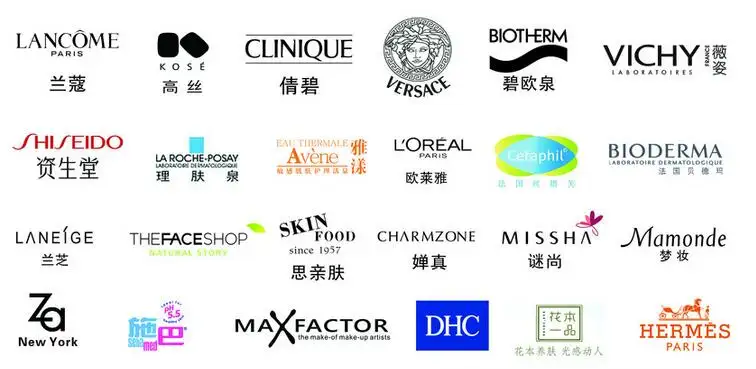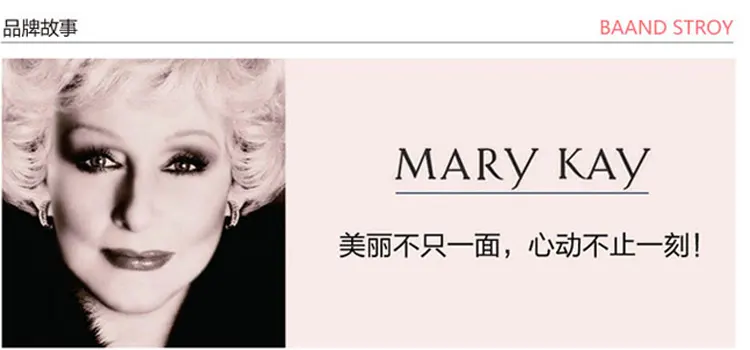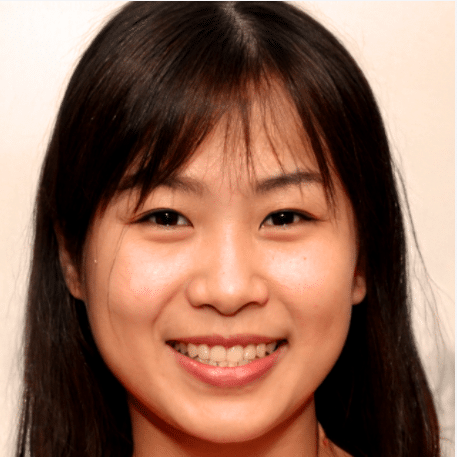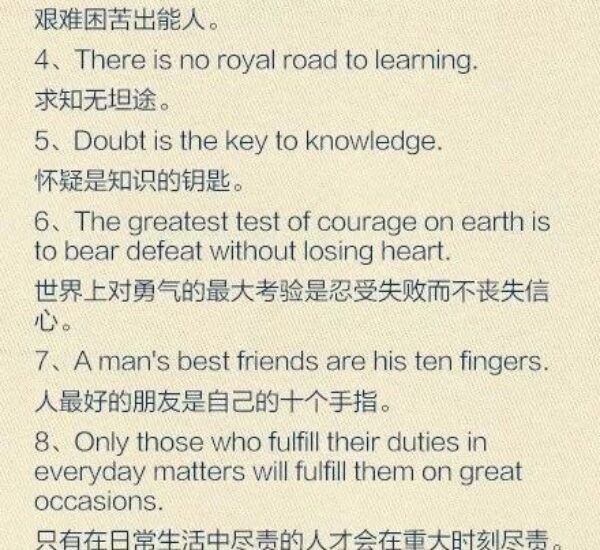Recently updated on February 21st, 2024 at 07:58 pm
One of the sectors with the biggest growth at the international level has always been the beauty and cosmetics industry. Moreover, the rise of the Internet and e-commerce has allowed companies in the industry to boost their sales by reaching many more customers.
Therefore, it’s important to advertise and market beauty products in different languages to maximize the ability to attract new customers and increase sales.
In this article, we’ll look into the strategies of a professional Chinese translation for cosmetic industry in the world’s second largest cosmetics market.
Translating Cosmetic Brand Names into Chinese
More and more foreign cosmetic brands come into the Chinese market and successfully attract Chinese consumers’ eyes. At the same time, companies are beginning to realize the importance of getting brand names in Chinese.
A brand name conveys a variety of meanings, both literally through its actual meaning (if it has one) and connotatively through its sound and the variety of associations and public meanings it has built up through use over time.
Gardner and Levy 1955

The ultimate purpose of the brand name translation is to make the target language consumers like the products as the locals do. The cosmetic brand names have many characteristics, which require the translator reflect the characteristics as much as possible.
Why is it Important to Translate Cosmetic Brand Names into Chinese
Translating cosmetic brand names into Chinese comes with many perks.
- Distinguish the products
- Create branding image
- Display the characteristics of the products
- Increase sales
Chinese Translation for Cosmetic Industry: 4 Highly Effective Tips

In the cosmetics industry, the translation of brand names with distinctive features is one of the favorable factors for businesses to compete in the international market.
To achieve the purpose of marketing, the translator should make a good reserve of knowledge with the standard of “content faithfulness, language conciseness, content optimization, cultural adaptation” and translate based on specific practice in order to achieve the marketing goal of an enterprise.
💡 Here’re 4 commonly used methods to translate cosmetic brand names into Chinese.
#1 Transliteration
Transliteration means translating text according to the original pronunciation and using words with similar pronunciation as a translation.
For example, Estee Lauder, an American manufacturer and marketer of prestige skincare, makeup, fragrance, and hair care products, is translated into Chinese “Ya shi lan dai” (雅诗兰黛). The pronunciation of the Chinese name is similar to that of the original one and both Chinese and English names have 4 syllables while the literal meanings and associated meanings of the Chinese name are quite different from those of the English name.
“Estee Lauder”, the English brand name, is named after one of its founders and has been reinforced in the advertising strategy and copy over a number of years, particularly through slogans that emphasize and reinforce the associated meanings, which were lost when crossing Chinese borders.
“Ya shi lan dai” (雅诗兰黛), the Chinese name, is meaningless as a whole and characters in it have nothing to do with the literal meaning of “Estee Lauder” while each character is meaningful and can arise associations of “elegance, fragrance, fashion, and taste”, core ideas or benefits of the brand.
The phonetic adaptation of the Chinese name of “Estee Lauder” helps the brand build a consistent global image in the Chinese market and promote the perceived quality of Estee Lauder products.
💡 Some one-syllable brand names are translated into two-syllables or three-syllables and two-syllables into three-syllables or four-syllables because two and three syllables are often adopted in Chinese names to meet the cultural-psychological needs of Chinese consumers.
Examples:
| Original Brand Names | Chinese Translation |
| Mary Kay | 玫琳凯 (Mei Lin Kai) |
| Pond’s | 旁氏 (Pang Shi) |
| Sassoon | 沙宣 (Sha Xuan) |
#2 Literal Translation
Literal translation is to translate directly according to the name of the original cosmetics, in other words, it is translated into the same or similar target language according to the meaning of the original text.
It is a common translation method in trademark translation and is also an ideal translation method and the advantage of which is to convey the information and emotion of the original name accurately.
💡 In literal translation, sometimes the order of the translation is adjusted to make it more consistent with the expression of the target language. In addition, to pursue a more concise expression, the original translation can also be omitted in the literal translation process.
For example, “Clé de Peau Beauté” should be literally translated into “开启美丽肌肤的钥匙” at first, but the final version is “肌肤之匙”. Overall, this literal translation method has made little changes to the original meaning and the Chinese translation for cosmetic industry is more compatible with the composition, packaging, and design of the product.
#3 Transcreation
Transcreation is a fusion of the words “translation” and “creation.” Sometimes transcreation is also called “creative translation.” Namely, because the content isn’t translated word for word. However, it remains faithful to the heart of the original text. This often means that adapting words, adding idioms, and adjusting figures of speech is necessary to the transcreation process.
For example, “Revlon” Chinese translation is “露华浓”. The Chinese translation for cosmetic industry does not simply combine several Chinese characters together. In fact, it is cited from the Chinese poet Li Bai’s “Qingping tune three” “云想华裳花想容,春风拂槛露华浓”, which describes the beauty of Yang Guifei – the beloved consort of Emperor Xuanzong of Tang dynasty, she’s also known as one of the Four Beauties of ancient China.
Other examples of transcreation are:
| Original Brand Names | Chinese Translation |
| Johnson’s | 强生 (Qiang Sheng) |
| Maybelline | 美宝莲 (Mei Bao Lian) |
| Nivea | 妮维雅 (Ni Wei Ya) |
| SLEK | 舒蕾 (Shu Lei) |
| PORTS | 宝姿 (Bao Zi) |
| L’Oréal | 欧莱雅 (Ou Lai Ya) |
💡 In the above examples, the pronunciation of the Chinese translation for cosmetic industry is similar to the English counterparts, however, the Chinese translation has better meanings reflecting the features of the cosmetics.
#4 No Translation
The no translation method is often used when the original brand name is of simplicity and of both phonology and visual beauty. From the perspective of aesthetic psychology, people will emerge a kind of expectation while perceiving something with a beautiful rhythm.
Taking SK-II as an example, the pronunciation of the original name can bring about a sensation of beauty and the “-” in the middle makes the brand name distinctive and fashionable. In addition, the length of the original brand name is perfect, and the content is easy to remember, so it’s a wise strategy to keep the original name.
English-Chinese Glossary of Cosmetics Terms
The following is a list of commonly used Chinese translation for cosmetic industry.
| English | Chinese |
| hibiscus peptides | 芙蓉肽 |
| hot-oil mask | 热油膜 |
| Hydro collagen | 水解胶原蛋白 |
| impeccable merchandising | 无懈可击的店铺陈列 |
| radiation | 辐射量 |
| up to and beyond | 达到并超过 |
| a catalogue of the craziest desires | 囊括疯狂致极的欲求 |
| a natural position with gravity | 在重力作用下自然舒展 |
| a stressed hair condition | 受损发质 |
| activating and abrasive massage | 焕肤磨砂按摩 |
| adult or pediatric | 成人或 儿童(适用) |
| after shave balm shower gel | 须后膏+沐浴露 |
| all-around dullness | 眼周肤色暗哑 |
| appearance of spots | 色斑出现 |
| ashiness | 苍白 |
| backstage warmth | 后台的温暖感 |
| boutique sales | 专营店销售额 |
| braces | 牙套 |
| brown spot | 褐斑 |
| cabinets of curiosity | (精品)陈列室 |
| cellular oxigenator | 细胞充氧剂 |
| clearance offer | 清仓特卖 |
| closest to skin’s own structure | 最贴近肌肤自身组织的天然脂类 |
| cuticle-stripping process | 表皮(层)剥离过程 |
| English | Chinese |
| desincrustation | 分解油脂去垢护理/疗法 |
| enhancing and defining | 让(容貌)焕然一新 |
| fortifying | 舒容 |
| glycerin | 甘油 |
| hair-crimper | 卷发器 |
| lift away | 消除/去除 |
| marketing sirens | 营销诱惑 |
| matt finish cream | 哑光完妆乳 |
| metallic structures | 金属结构 |
| midnight dark | 深黑色 |
| miracle demos | 神奇功效的示范 |
| ombre brown | 浅棕 |
| prestige essence | 顶级精华露 |
| promise statement | 效果承诺(声明) |
| re-educate | 重塑 |
| reframe | 重新定义 |
| rich and efficacious | 丰润而有效 |
| silicone coat | 硅化涂层 |
| smooth finish | 表面光洁 |
| steam inhalation | 蒸气吸入 |
| superfruits | 神奇抗氧化水果 |
| tone | 柔肤/爽肤 |
| wedding veil edges | 新娘面纱围边 |
| white perfect partners | 美白最佳伴侣 |
| whiten and correct | 美白遮瑕 |
| complementary skincare treatments | 辅助护扶品 |
Frequently Asked Questions
Which are the largest cosmetics markets?
Here’re the 10 largest cosmetics markets:
1. United States
2, China
3. Japan
4. South Korea
5. France
6. Germany
7. United Kingdom
8. Brazil
9. India
10. Italy
How can I sell my cosmetics in China?
Tmall, VIP Shop, JD, and Pinduoduo are essential online platforms to sell cosmetic products in China.

Translation Manager
Eva has 6 years of experience working as a News Editor and 5 years as a freelance copywriter. She holds a bachelor’s degree in English from the Guangdong University of Foreign Studies and a master’s degree in applied Linguistics from the University of Melbourne.



